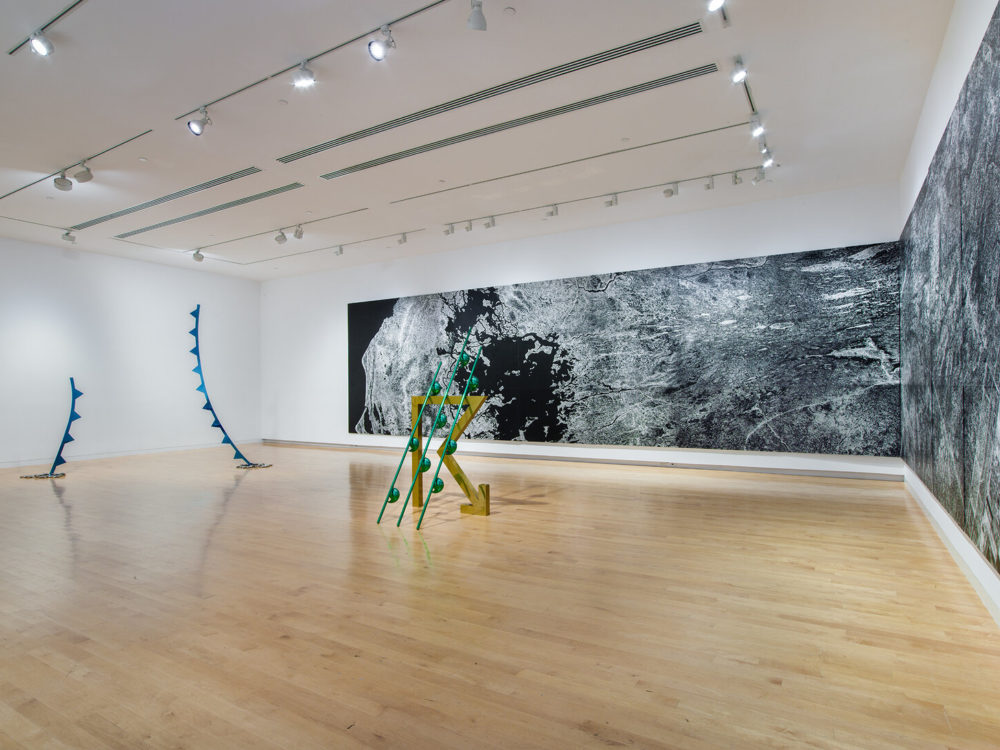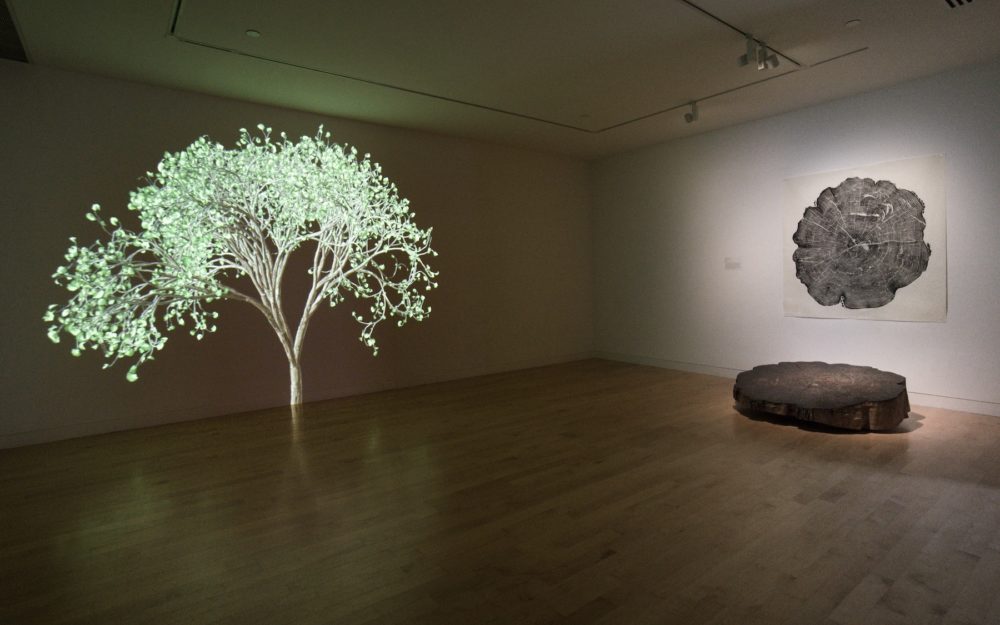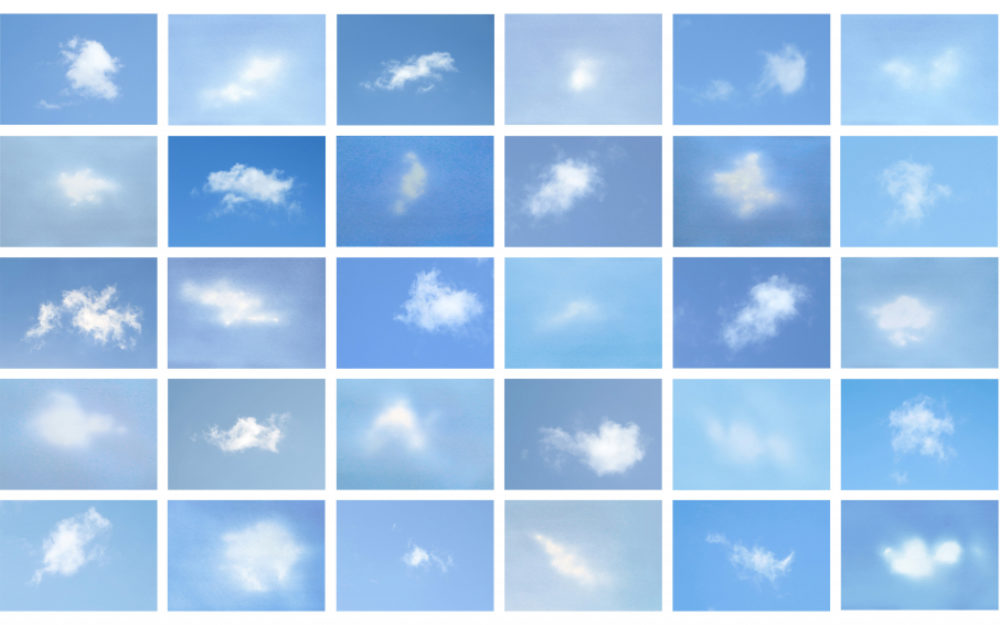- We’re open today from 10 am to 5 pm
- Purchase tickets
- Join mailing list
- Join as a member
- Donate

When Art Captures the Wind and the Rain—and a Bit of Ourselves, NRDC
The next time you turn on the Weather Channel or search an app for the weekend forecast, consider the role that you, the consumer, play in the weather report you seek. In the time it takes to read this paragraph, for example, the average person will breathe approximately four liters of air, a gaseous mix consisting of about 20 percent oxygen and 0.5 percent carbon dioxide. Yet when we exhale that same breath, according to Richard Klein, the exhibitions director of the Aldrich Contemporary Art Museum in Ridgefield, Connecticut, its gaseous composition changes to include 15 percent oxygen and 5 percent carbon dioxide. Our lungs and circulatory system take in what they need and expel what they don’t. Eventually, the air we breathe back into the atmosphere tens of thousands of times a day is absorbed by the leaves of plants and trees, which fall to the forest floor, yielding carbon-rich soil that nurtures our food.
In other words, we don’t just live in the earth’s ever-evolving atmosphere, otherwise known as the weather; it also lives in us. That’s one point of focus of “Weather Report,” a new exhibit that brings together works by 25 artists who share a preoccupation with the influence of wind, clouds, storms, drought, and other meteorological phenomena on the human experience. “Weather doesn’t only affect us physically,” says Klein. “Our immersion in the atmosphere and its various moods has a profound impact on our imaginations.”
Inside the museum’s galleries in a small-town New England setting, “Weather Report” is a major atmospheric disturbance—of thoughts, materials, and artistic methods. Along with traditional representations of the esthetics of weather in painting and photography, the show presents sculptures, music, science-informed installations, and performance projects. The sampling of artists is also diverse, from internationally known Andy Goldsworthy and Nick Cave, whose large, fabric-covered Tondo overlaps Doppler radar images of a cyclone with brain scans of African-American youth suffering from PTSD because of gun violence, to Sara Bouchard, a university instructor and composer who arranges weather data collected in New York’s Central Park into lyrical musical sequences recorded on old-fashioned punch cards that are then played on a hand-cranked music box.
Ephemeral by nature, weather and the variable conditions that create it appear in formats both monumental and disturbingly intimate. California artist Pat Pickett, for example, experiments with delicate drawings that capture the wind’s movement through trees. She creates them by attaching colored markers to tree branches and positioning paper on a sturdy tripod next to them. The results—such as Sugar Pine—1 Hr. Santa Susana Mountains. October 29, 2015—have an almost journal-like quality, chronicling the raw reactions of a plant in a challenging environment.
As the wind blows, the tree at the center of Sugar Pine sketches a complex mesh of short strokes. Pickett, whose practice combines the study of aerodynamics with an appreciation of the highly evolved mechanisms by which trees survive, says the drawings illustrate what a tree does “to save its life.” It chooses to bend rather than break. They also reveal the powerful force of wind, which is otherwise invisible.
Hanging nearby is one of the exhibition’s showstoppers, Storm Prototype by Iñigo Manglano-Ovalle. Suspended from the ceiling, a pair of huge metallic storm clouds, shiny but imposing, evoke the “terrible beauty” traditionally associated with representations of weather in Western art, but in the context of the global forces that shape society across political borders. Based on data from the Department of Atmospheric Sciences at the University of Illinois, the seemingly weightless forms are miniaturized scale models of an actual supercell thunderstorm that traveled over the Midwest in 2000.
Manglano-Ovalle has also made films of climatic events around the U.S.–Mexico border to highlight natural phenomena that occur over artificial but highly politicized boundaries. He became interested in weather systems like this one—which originated with El Niño in the Pacific Ocean thousands of miles to the south—as a metaphor for social, political, and economic climates as well as global migration, which is often connected to weather and climate conditions.
Several other works in the exhibition take direct aim at the premise mentioned by Klein, that “by merely breathing, we participate in the atmosphere.” You see it expressed explicitly in Ayumi Ishii’s The Breath From Which the Clouds Are Formed, a series of 50 cloud and cloudlike images arranged in a grid. Half of the images are photographs of real cloud formations, while the rest are fluffy white impressions made by the warm breath of the artist on special heat-sensitive paper. She has literally contributed to the atmosphere, and she reminds us that, in the Anthropocene period, when human activity is the dominant destructive force on the planet, we all have.
Related Exhibitions
Weather Report
Related News
Weather Report Exhibit at The Aldrich Goes Beyond Clouds and Rain, The Ridgefield Press
A diverse selection of art ranging from drawings and paintings to sculptures, videos and installations — all featuring weather as the thematic subject — is on view at The Aldrich Contemporary Art Museum.
Getting Your Weather Report at the Art Museum, Hyperallergic
At the Aldrich Contemporary Art Museum, artworks confront their own untimeliness through appeals to a deeper, more cosmic, sense of space and time.
Artists on the Verge of an Ecological Breakdown, Elephant
Over the years, many artists have have proven themselves to be staunch supporters of environmental campaigns.
Top image: Storm Prototype by Iñigo Manglano-Ovalle, 2007 Courtesy the artist and Rhona Hoffman Gallery, Chicago



